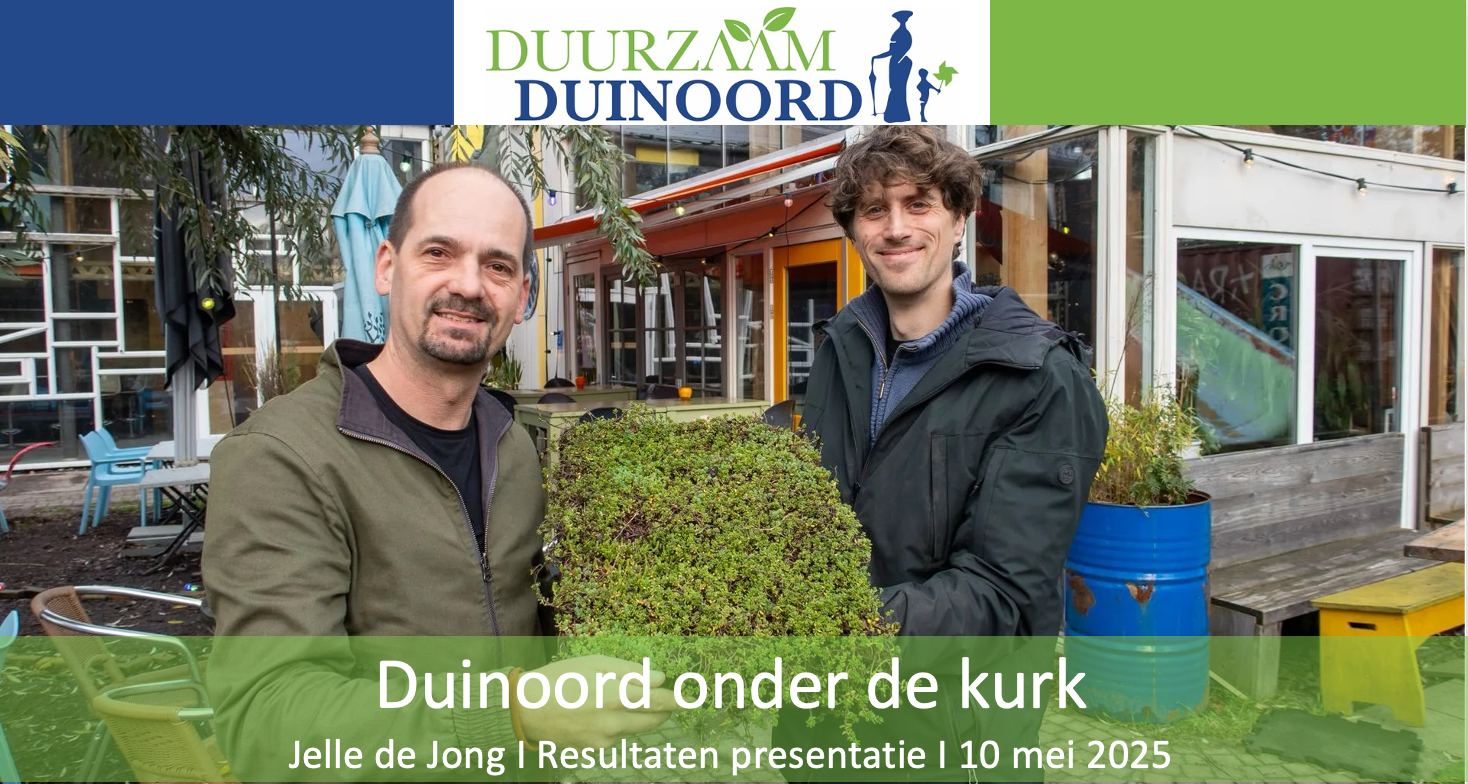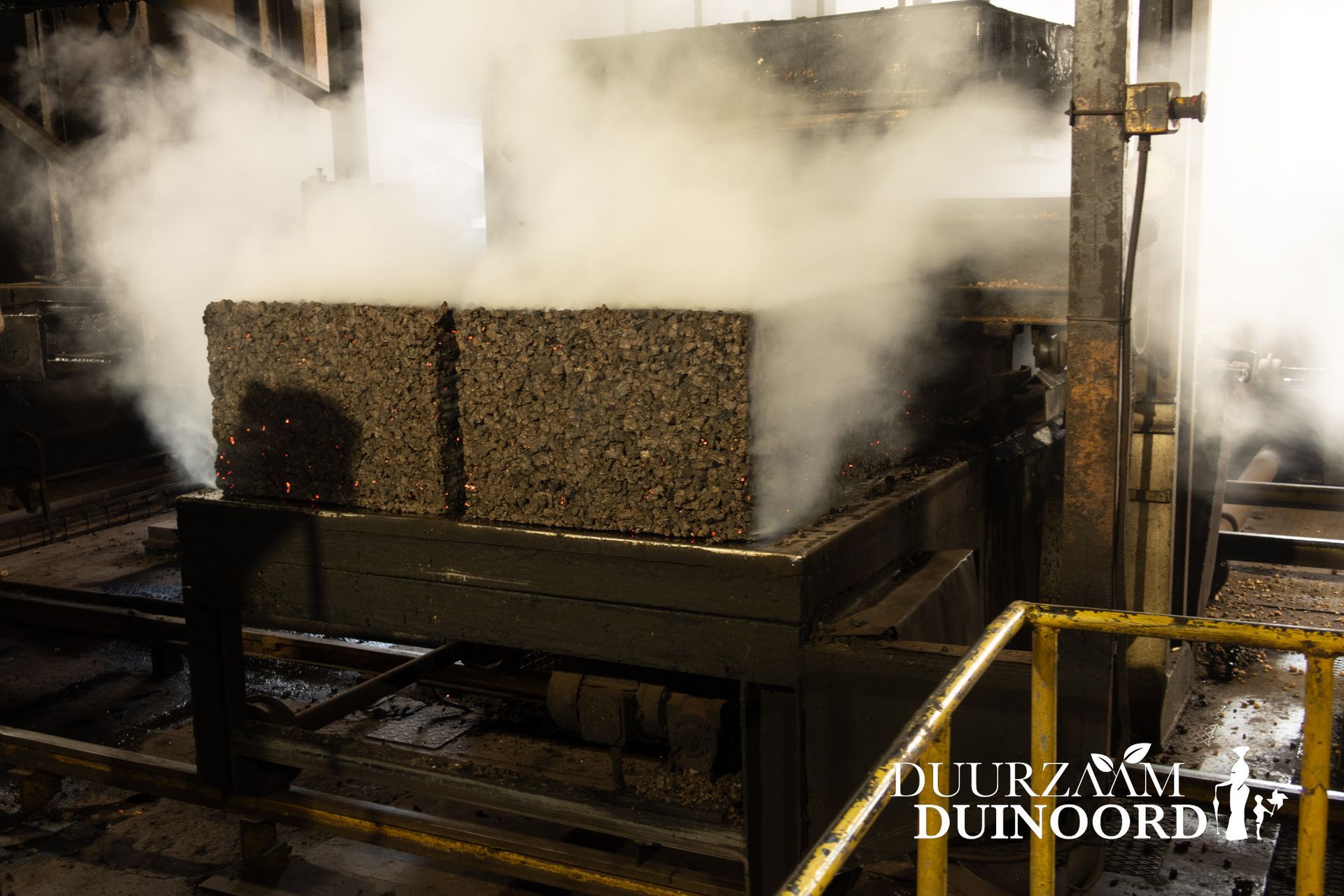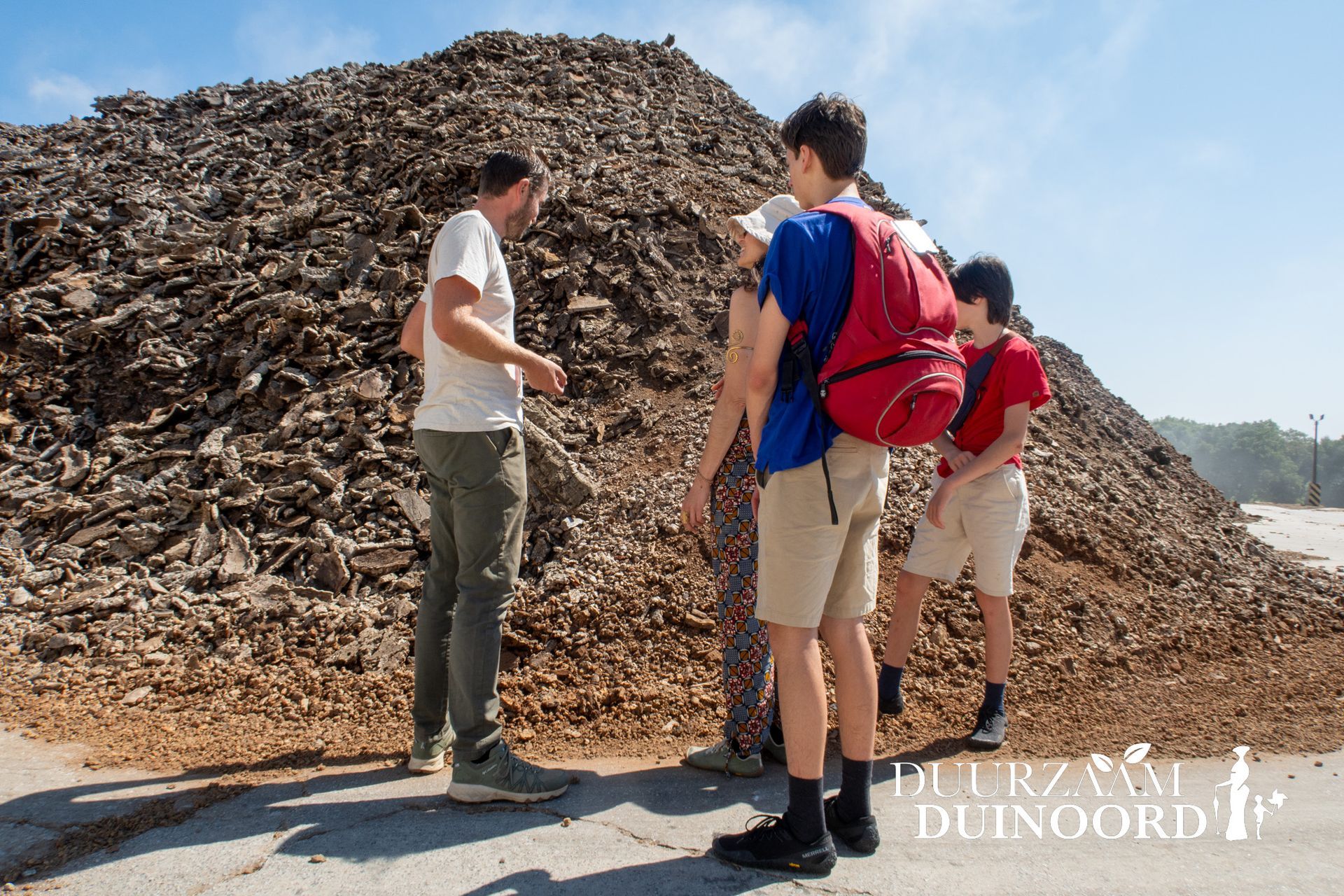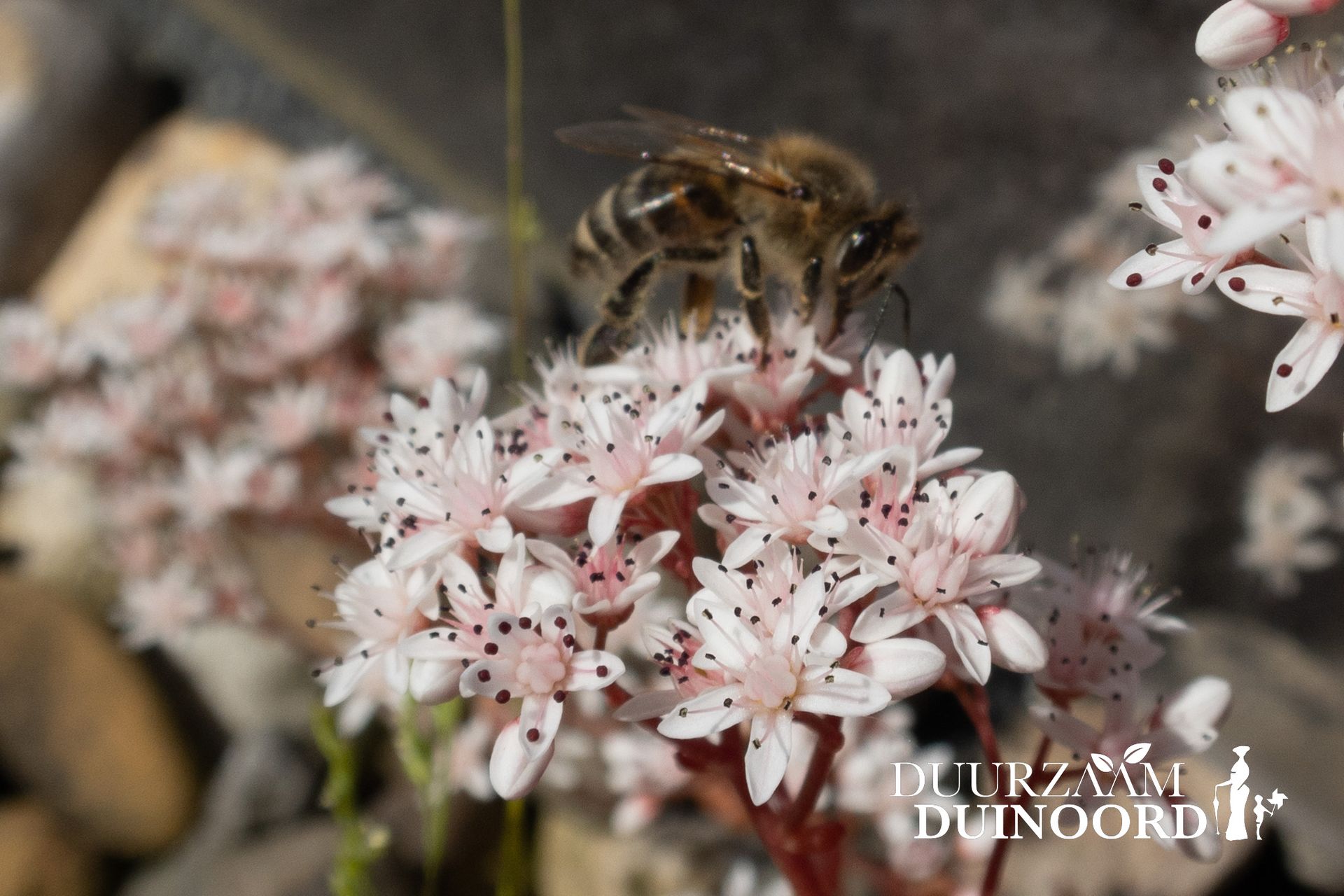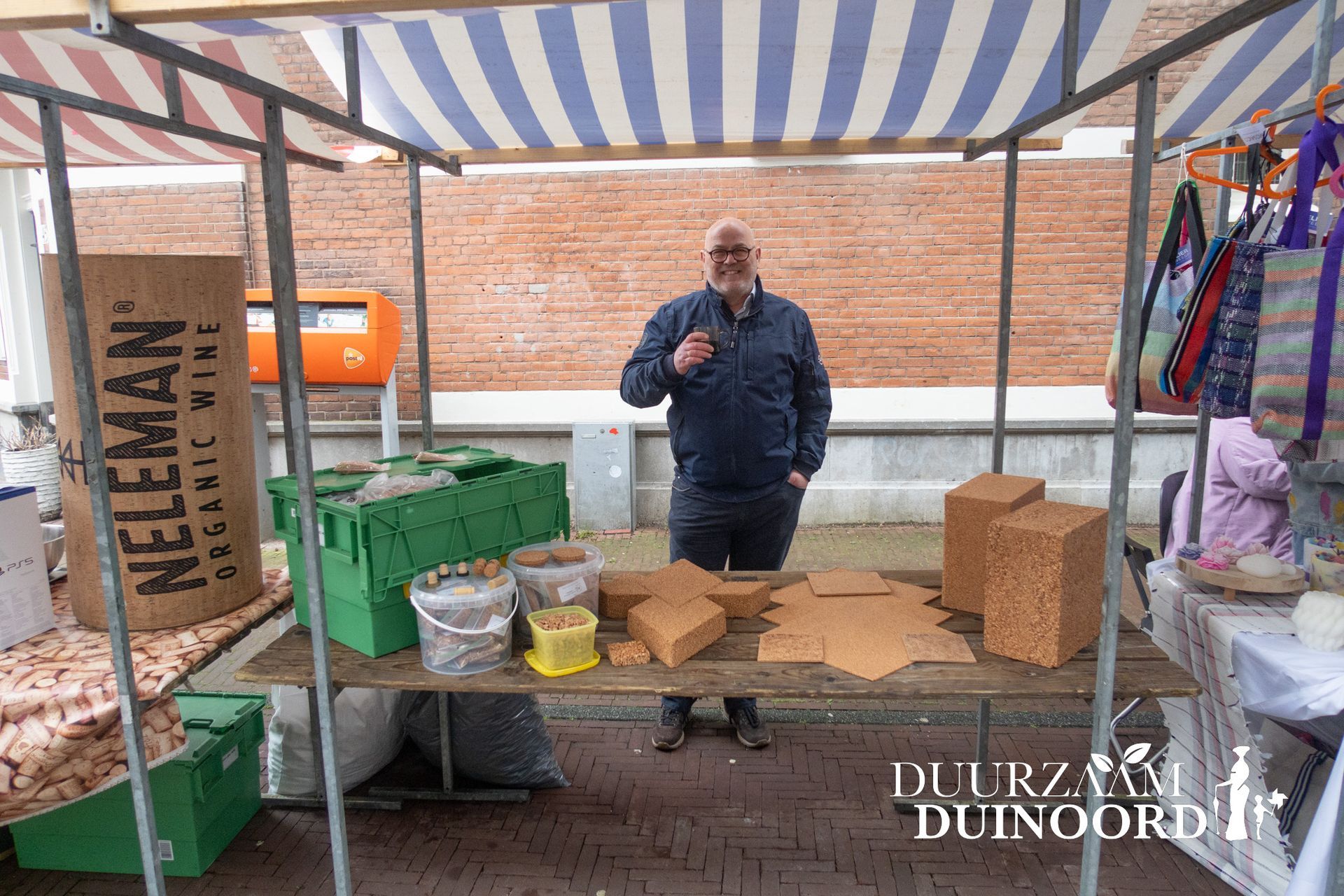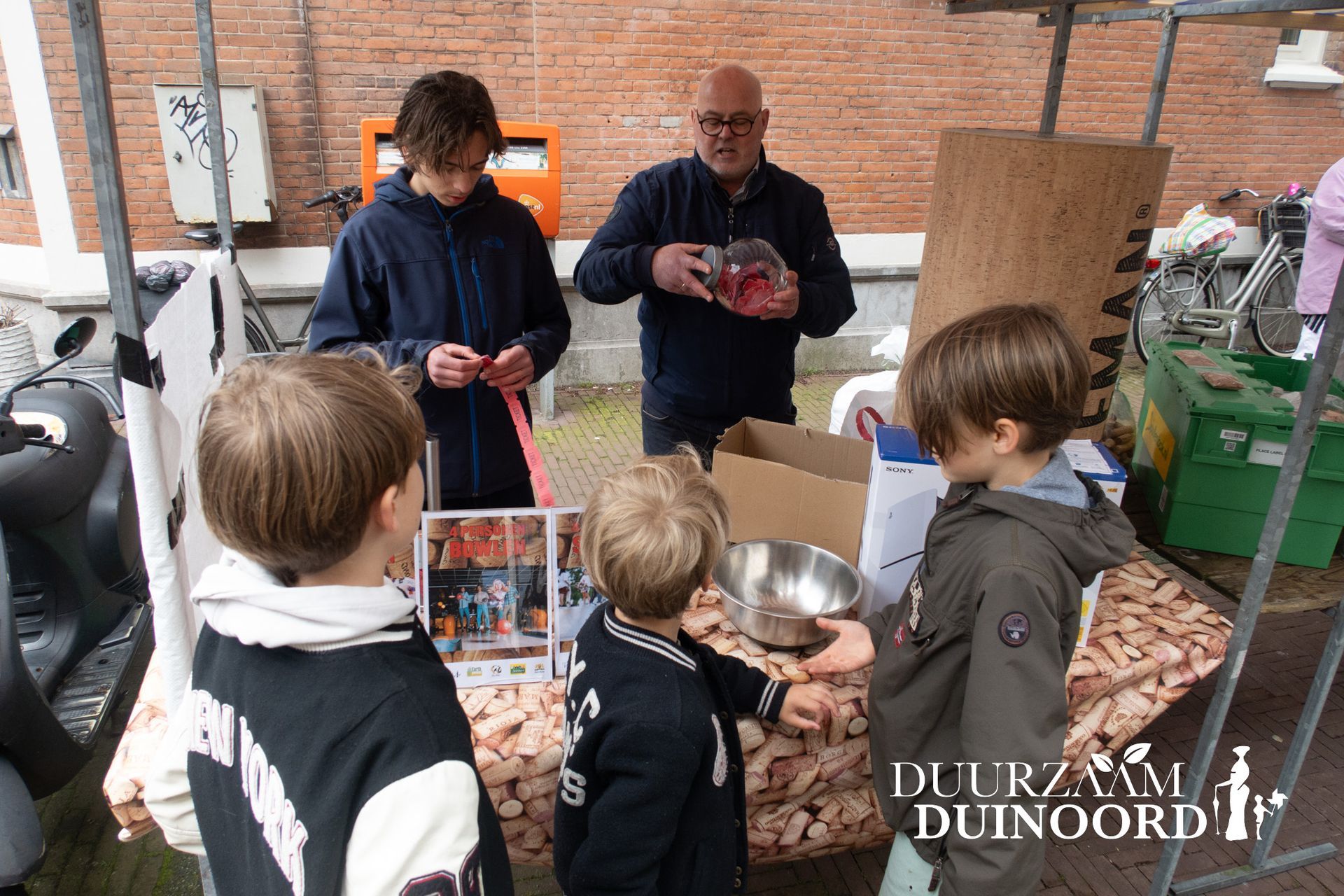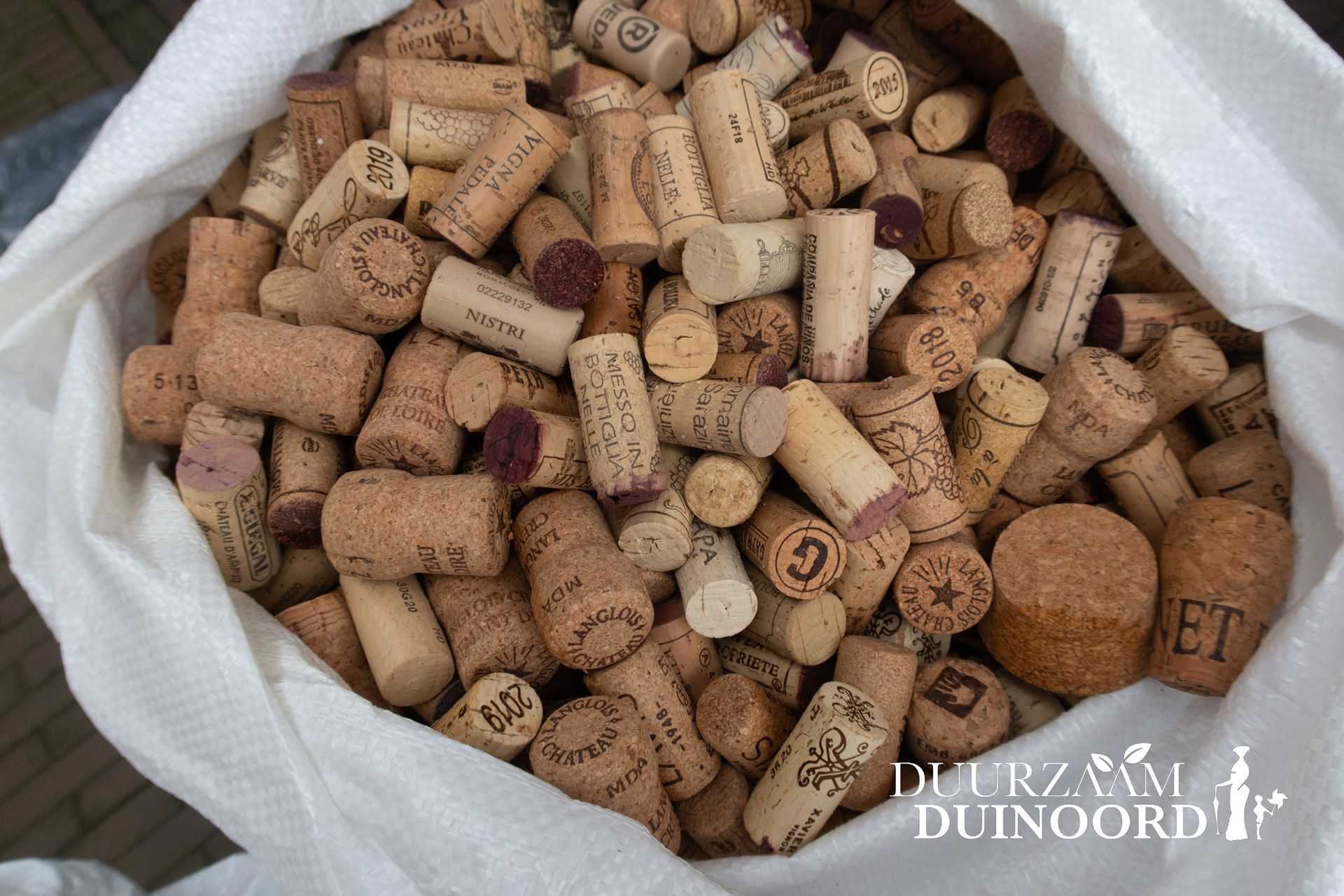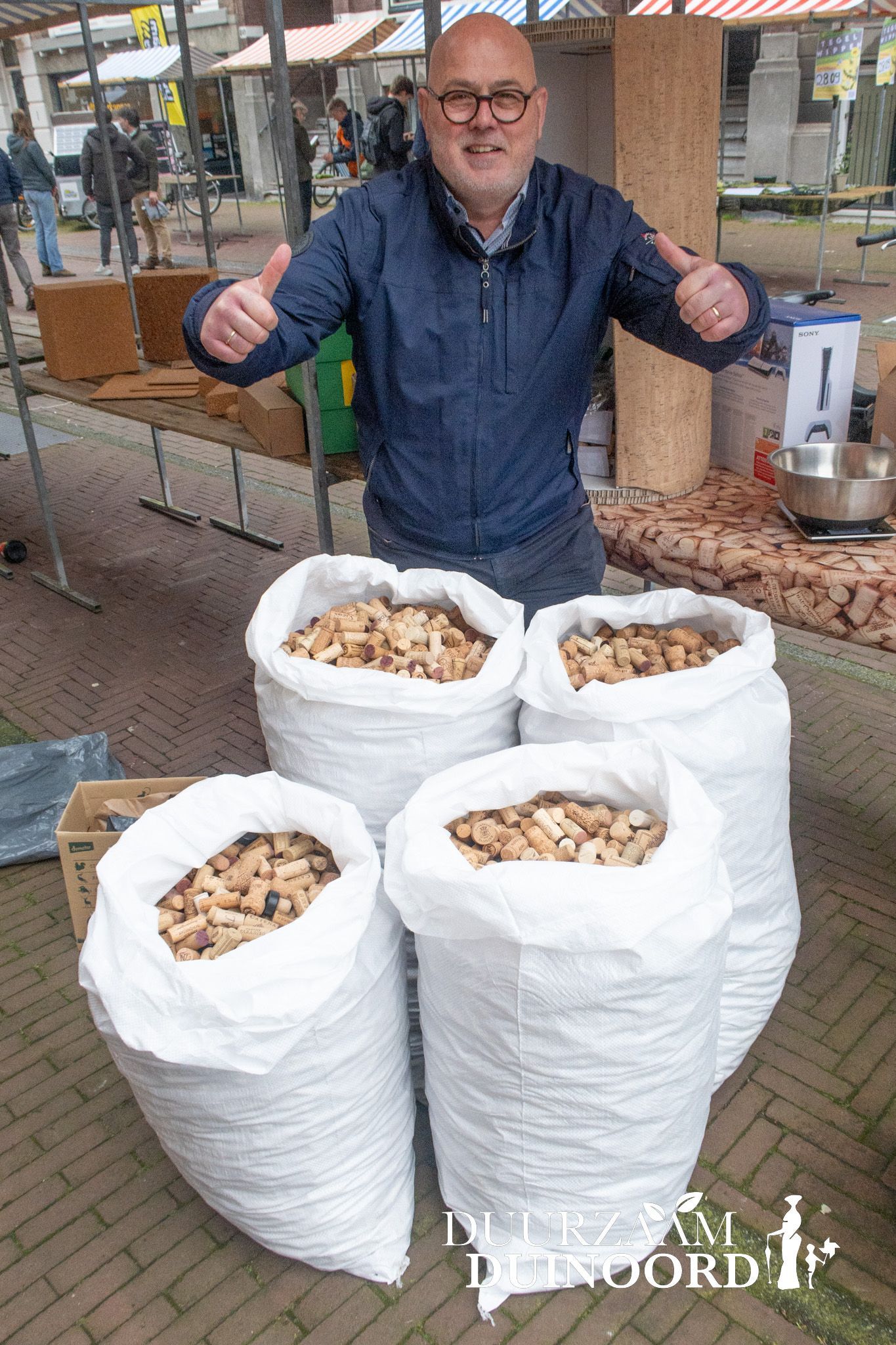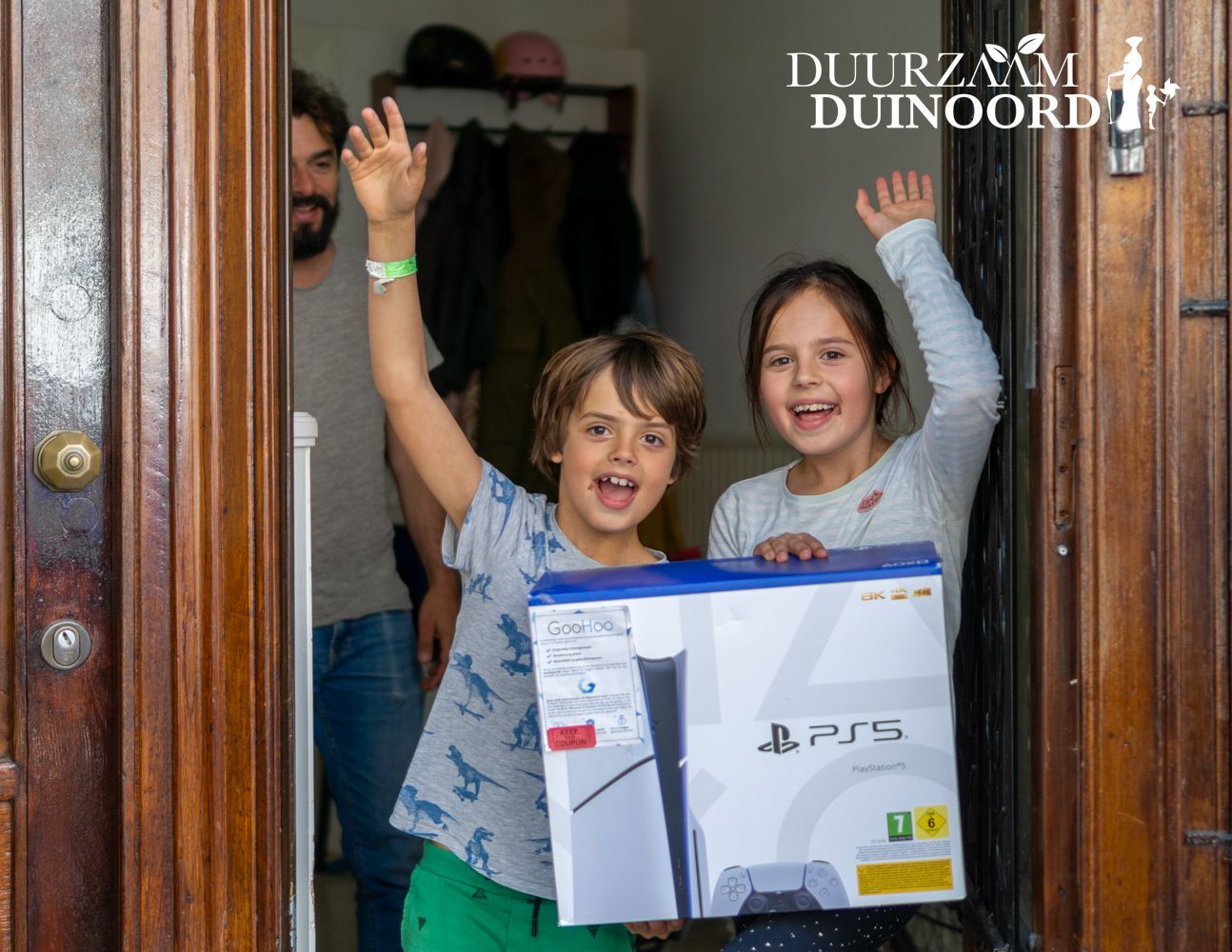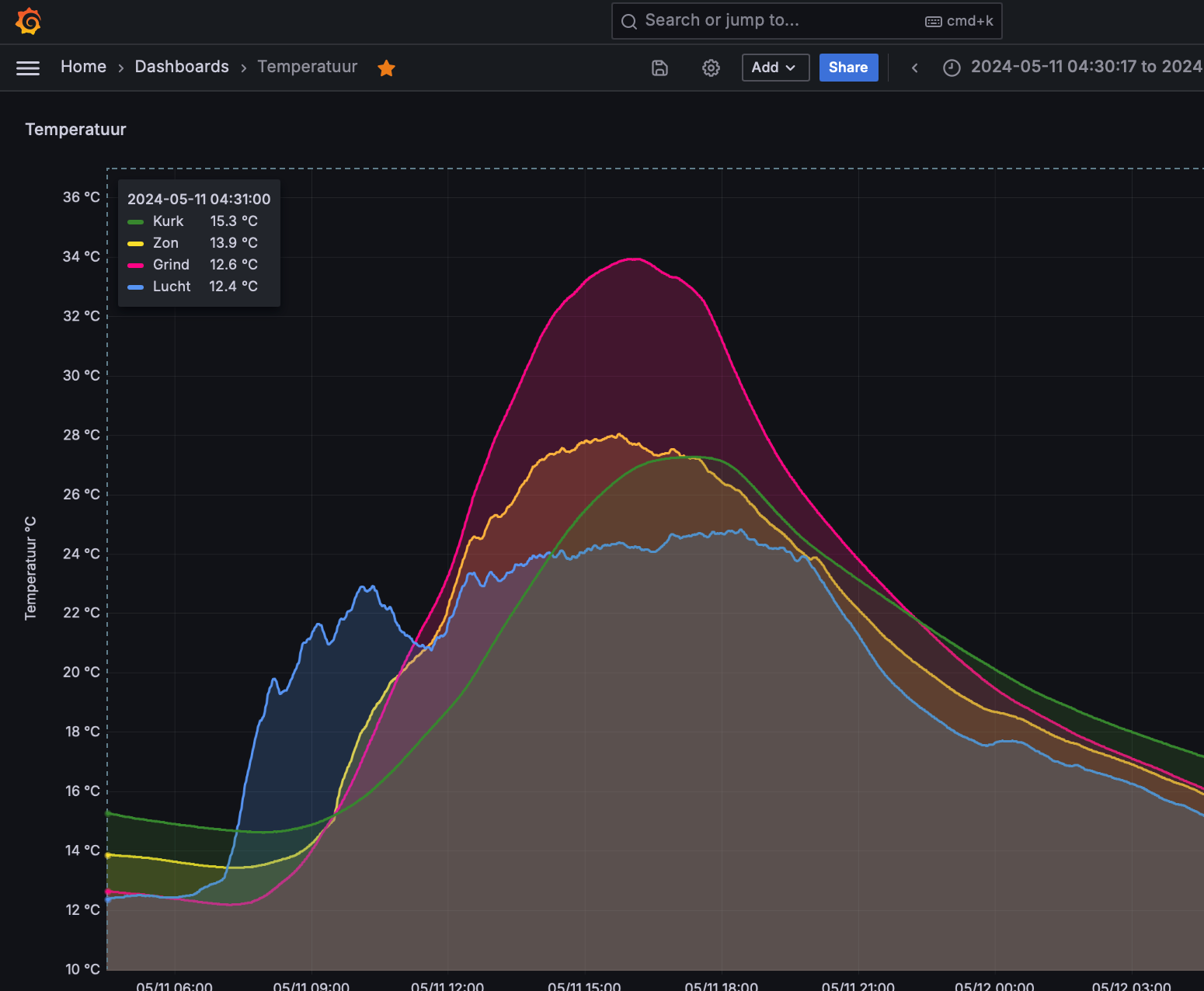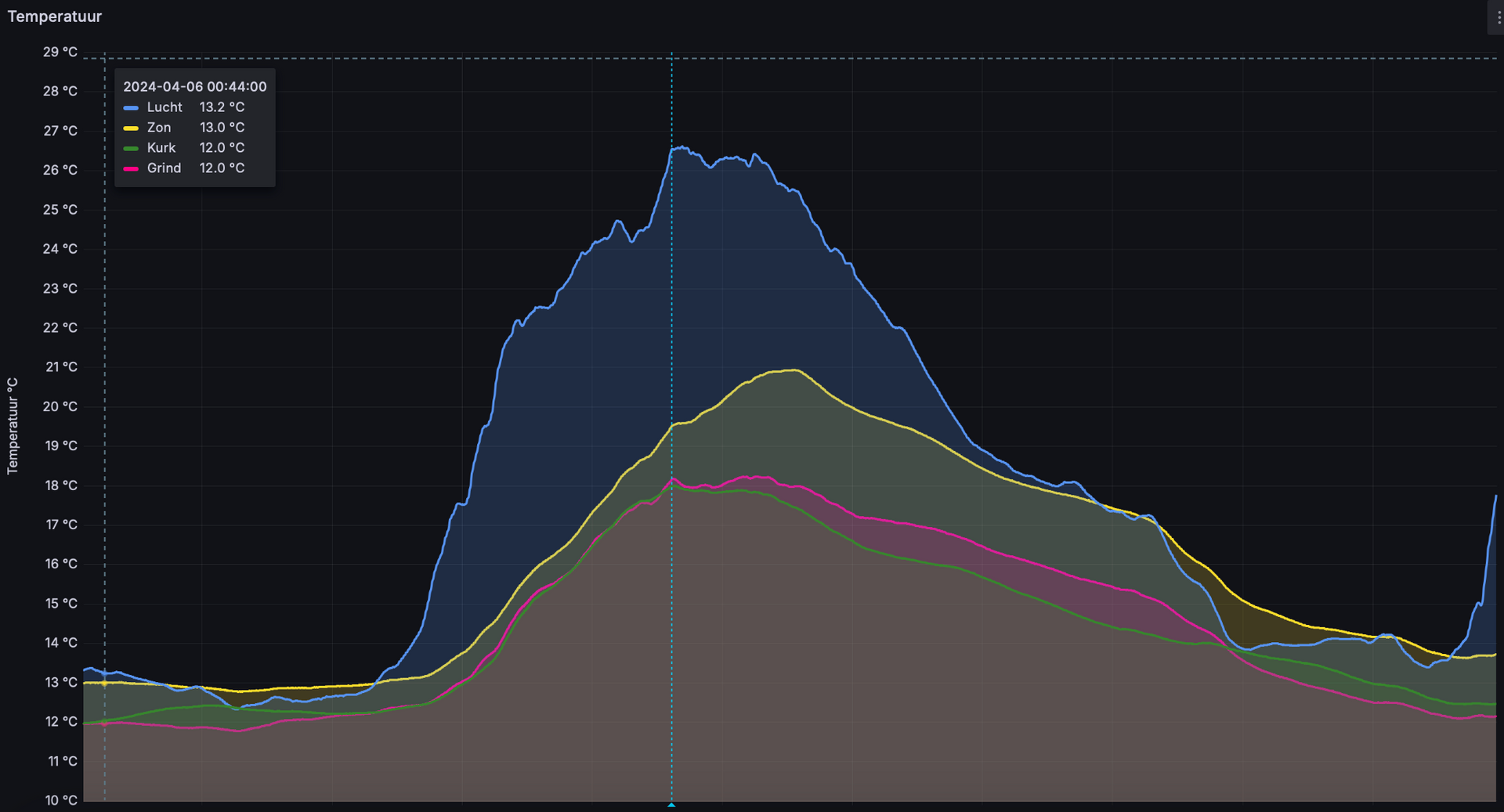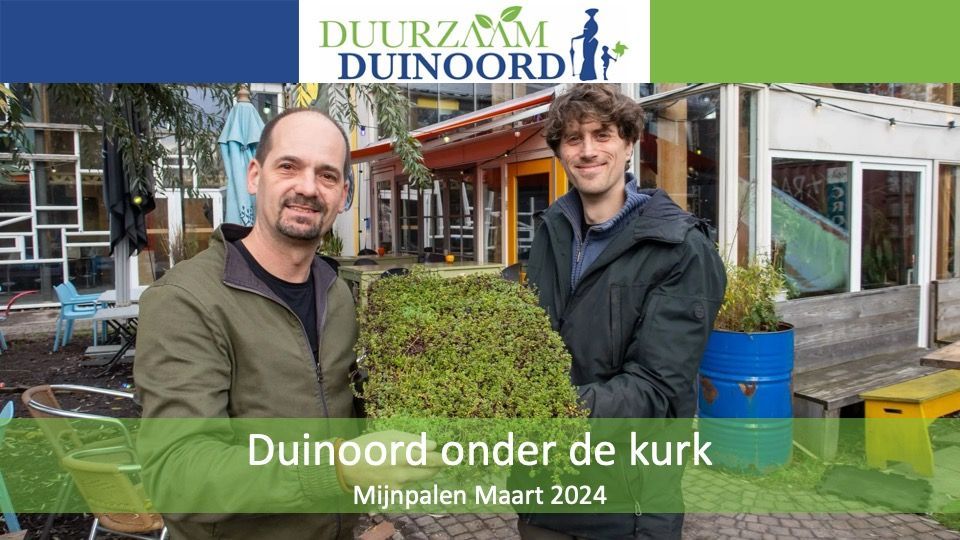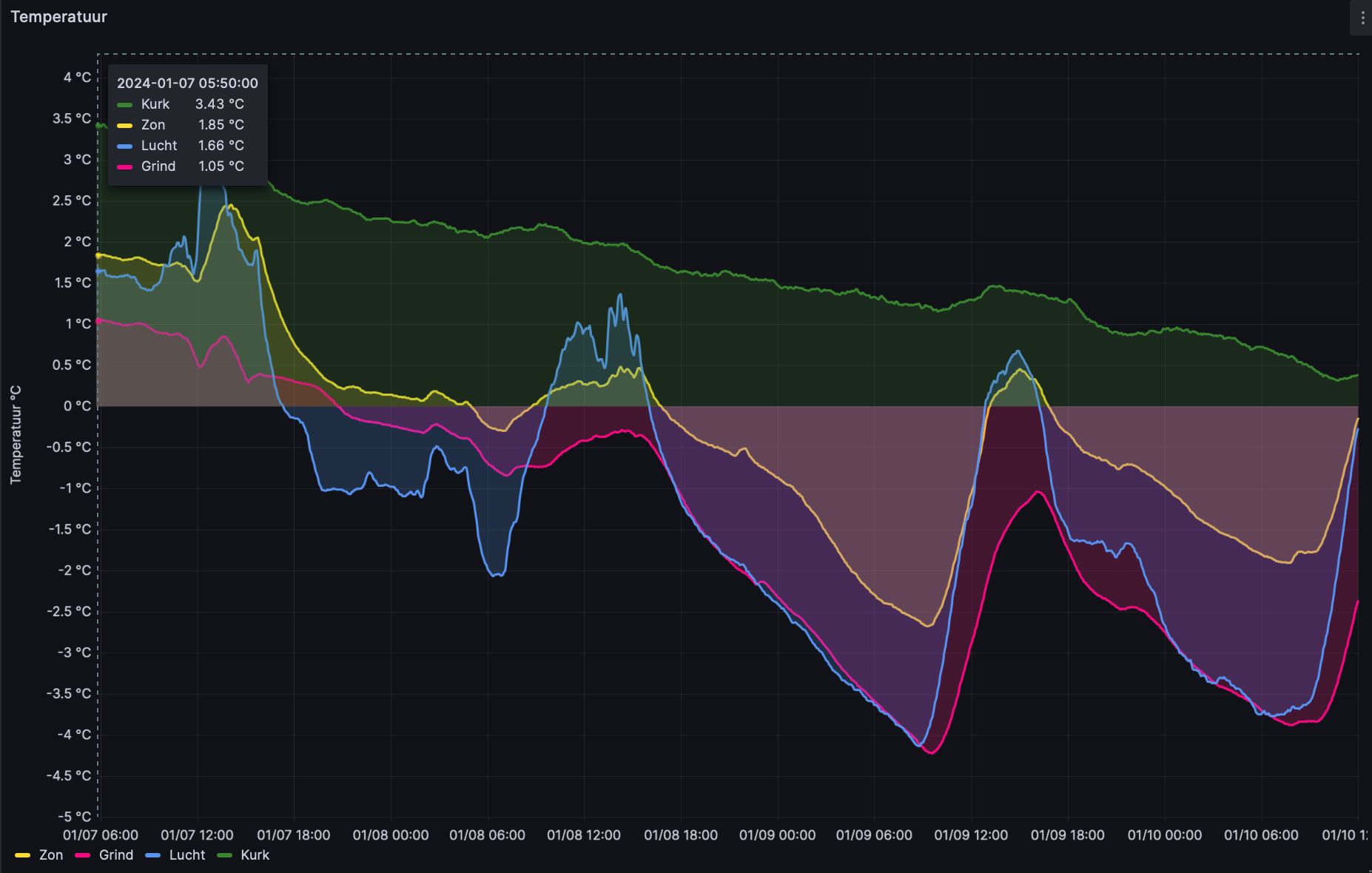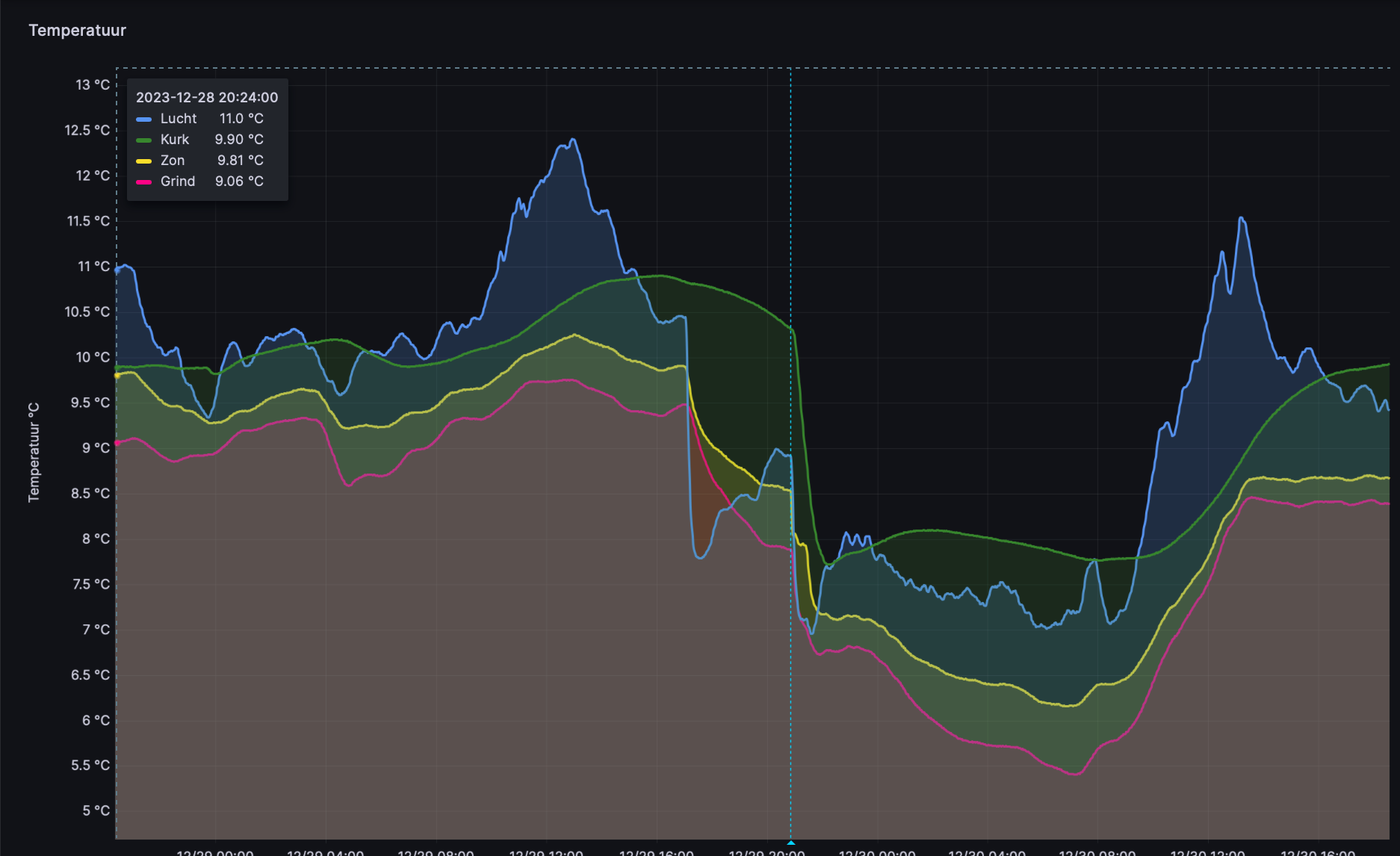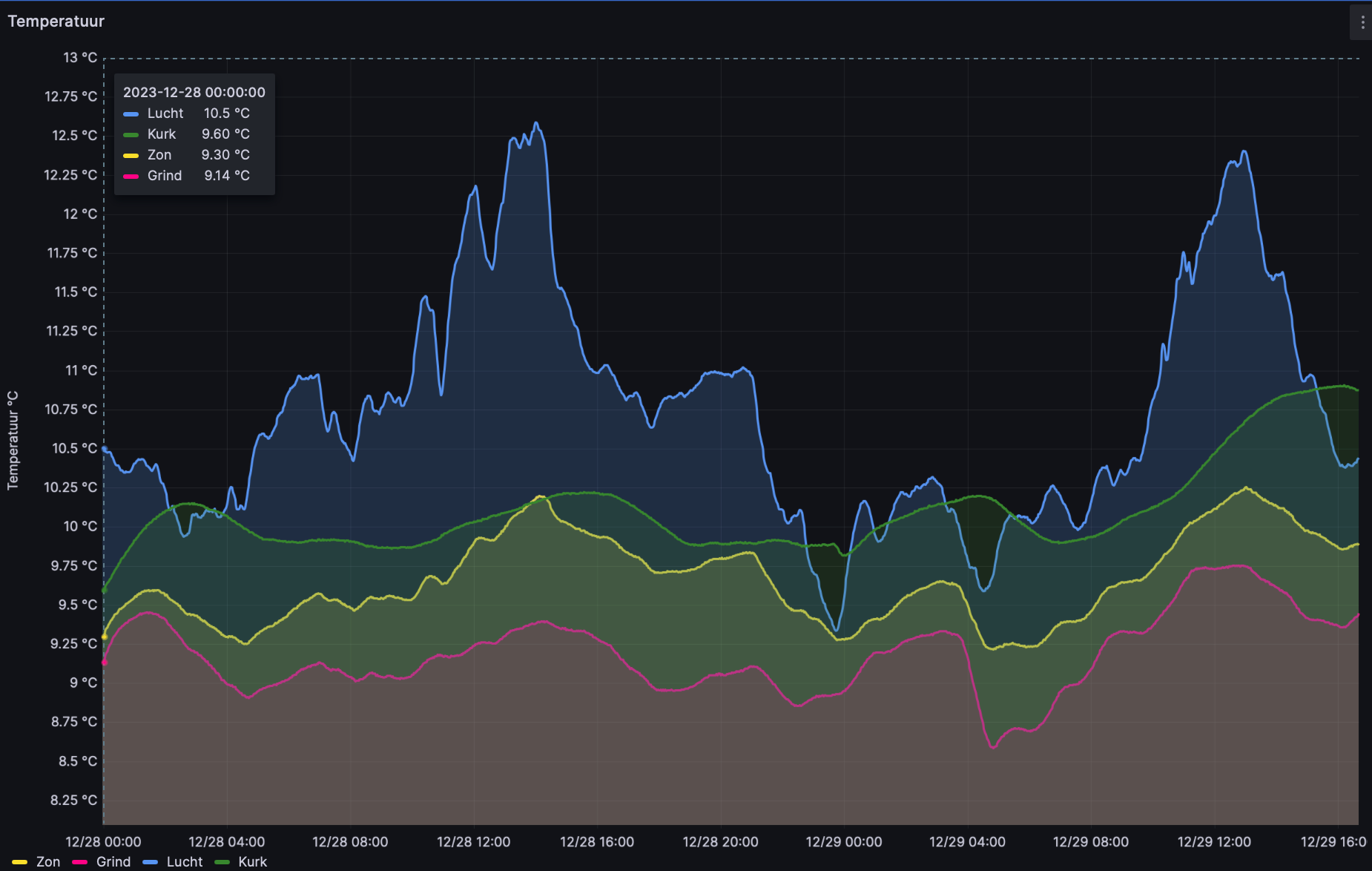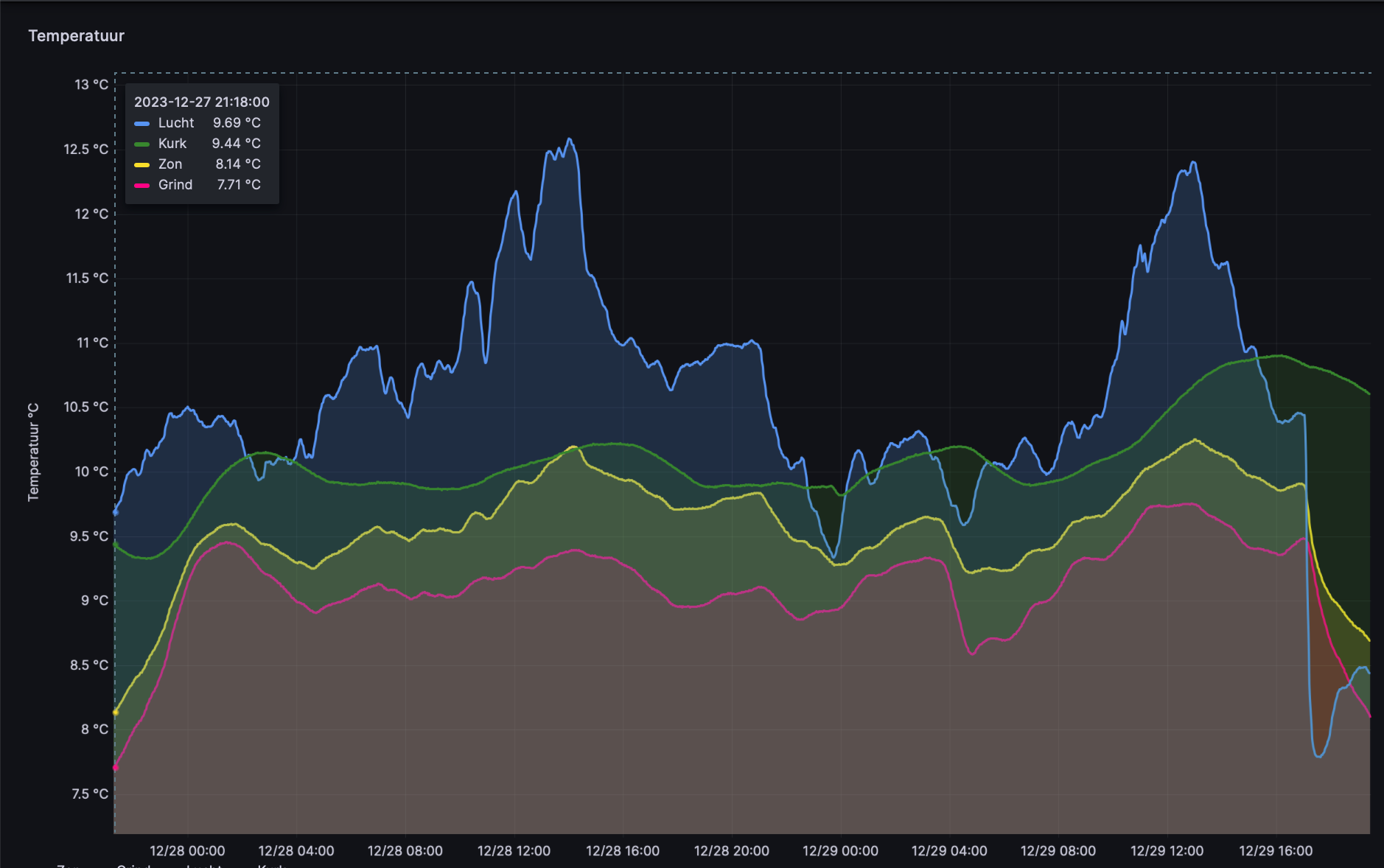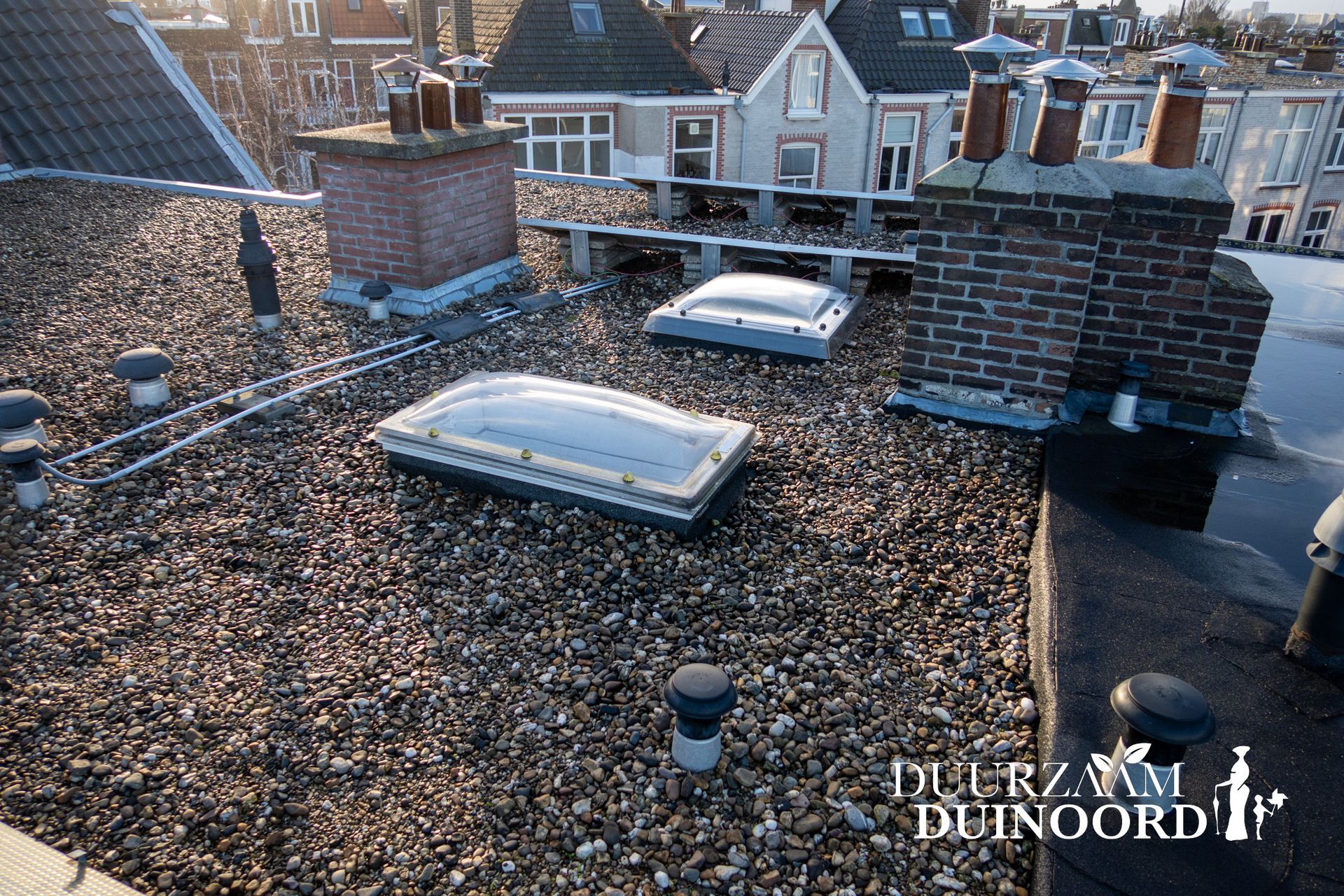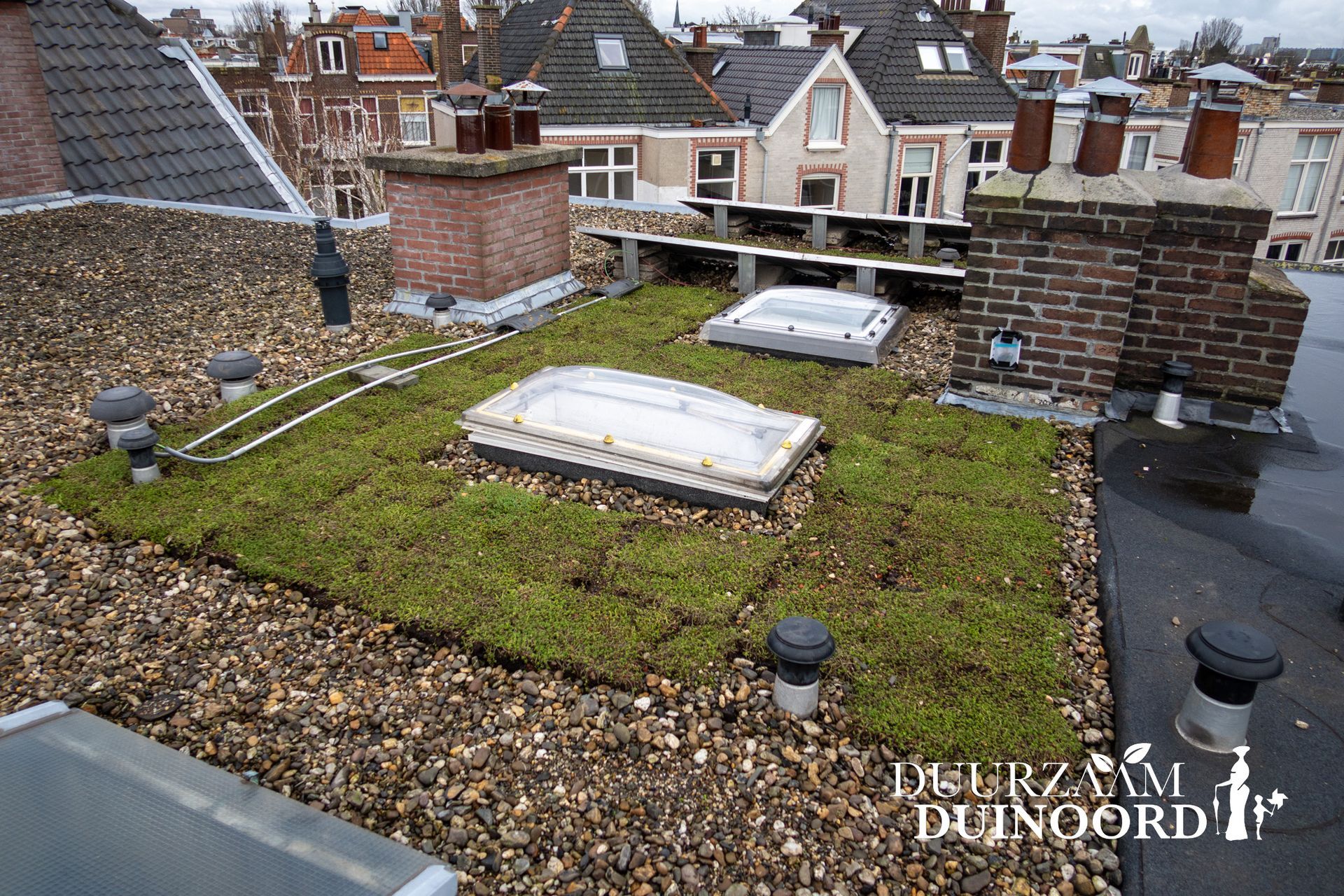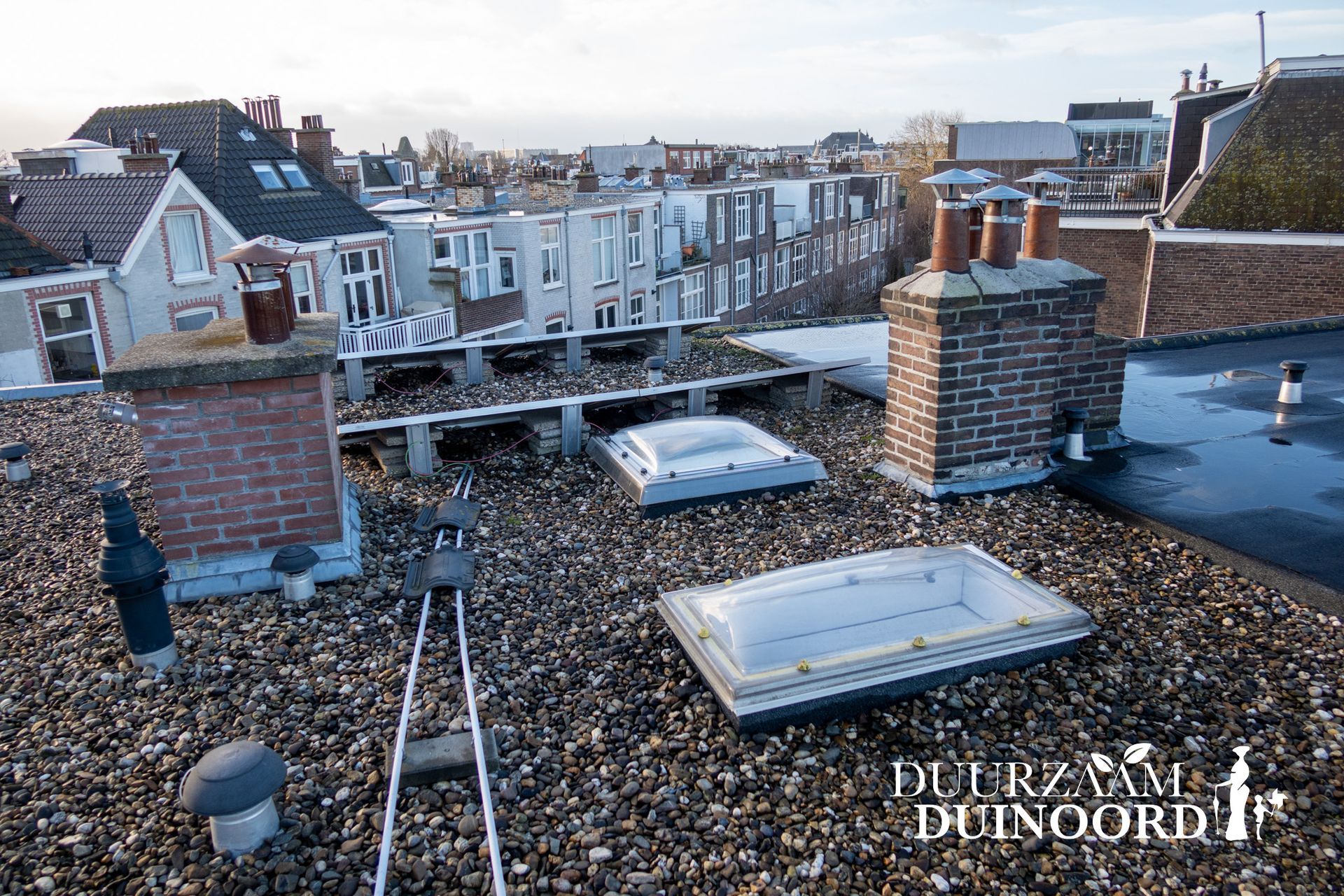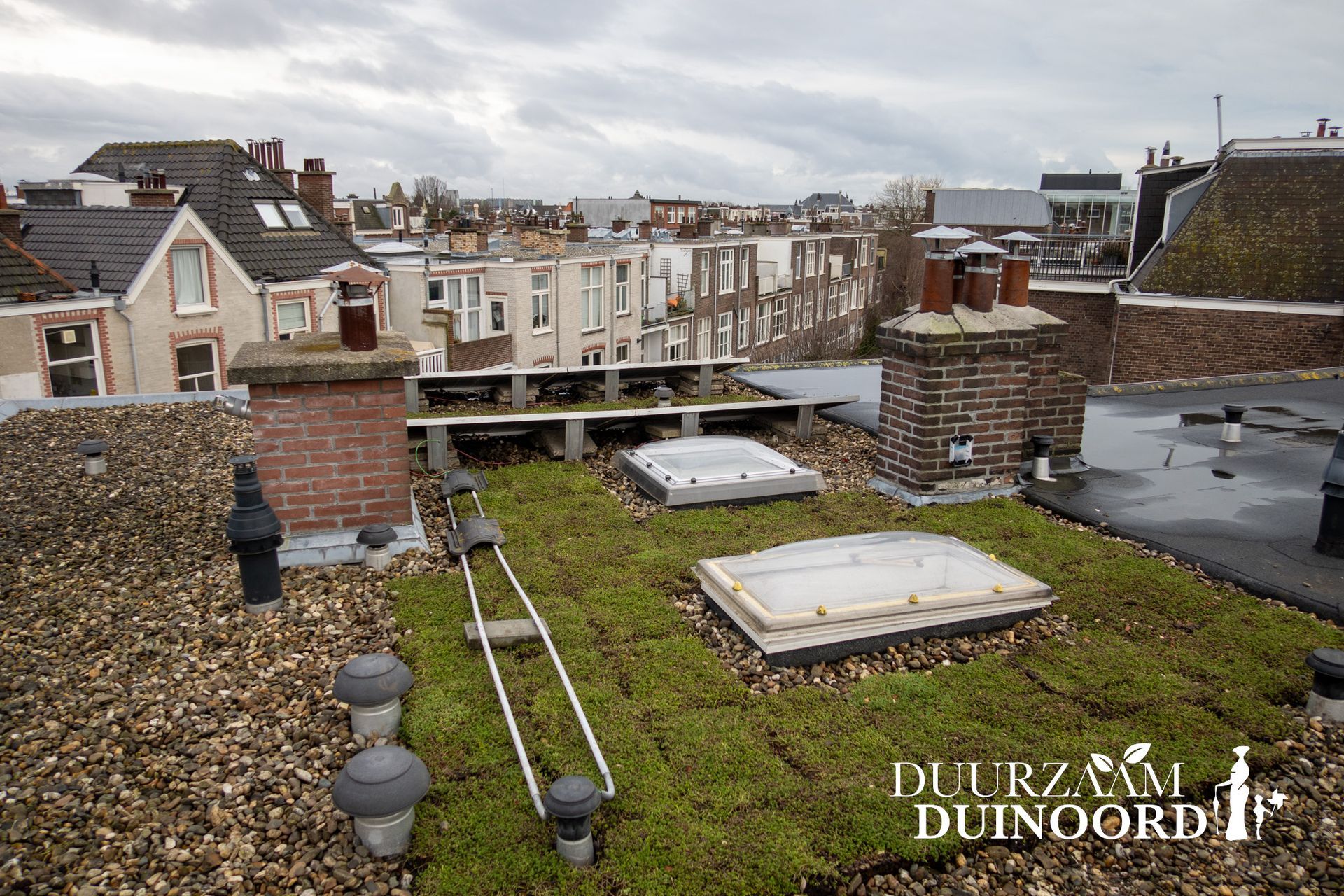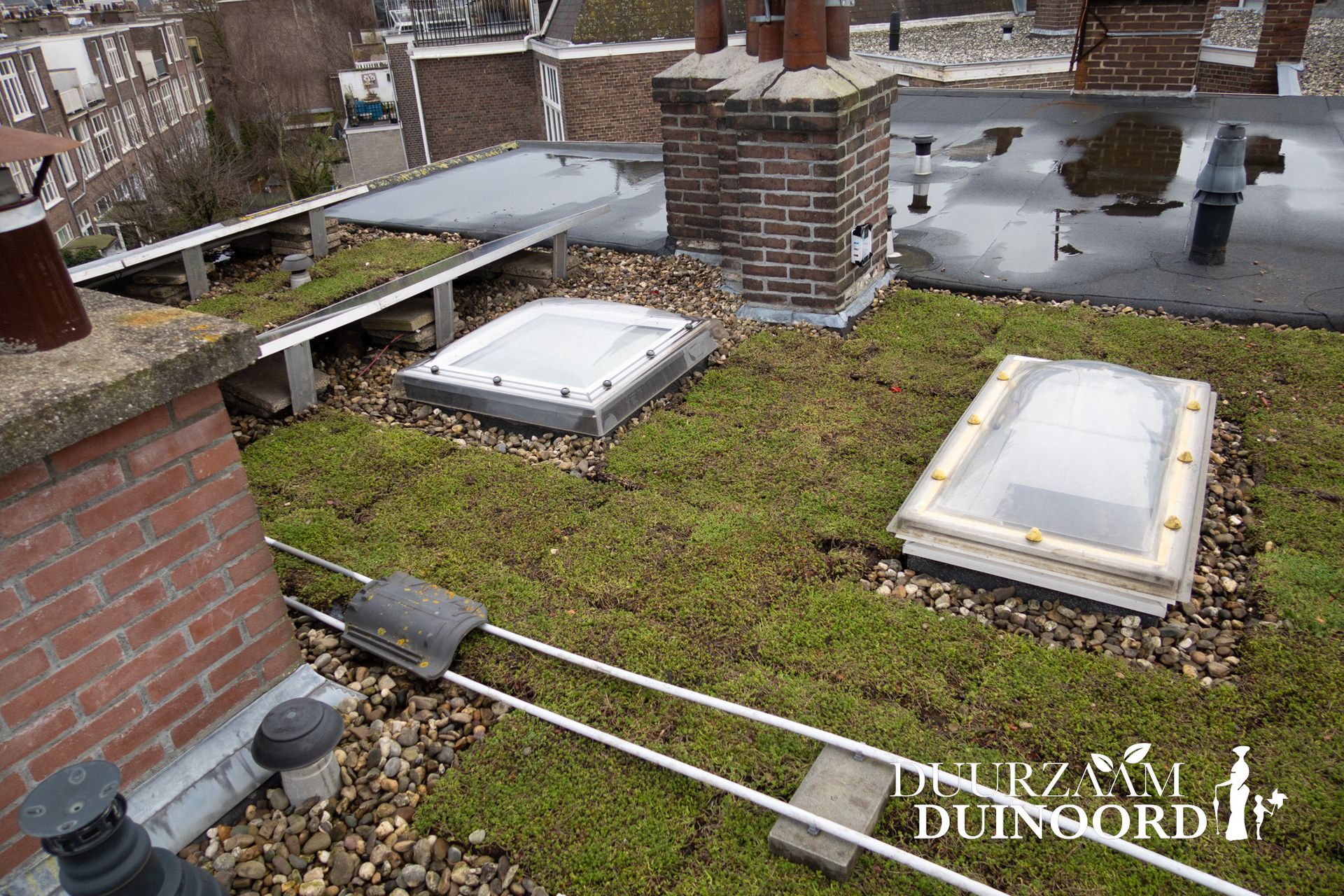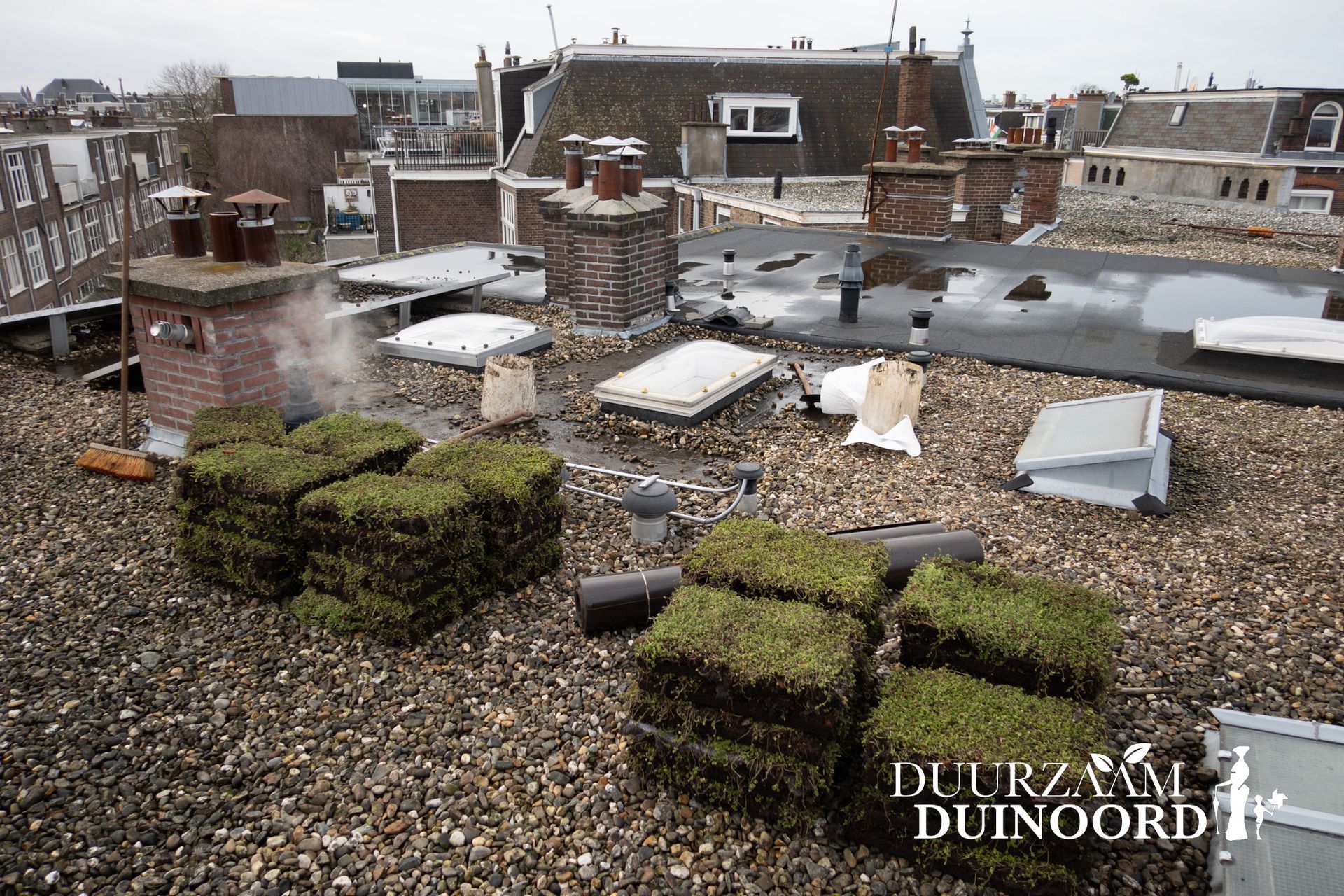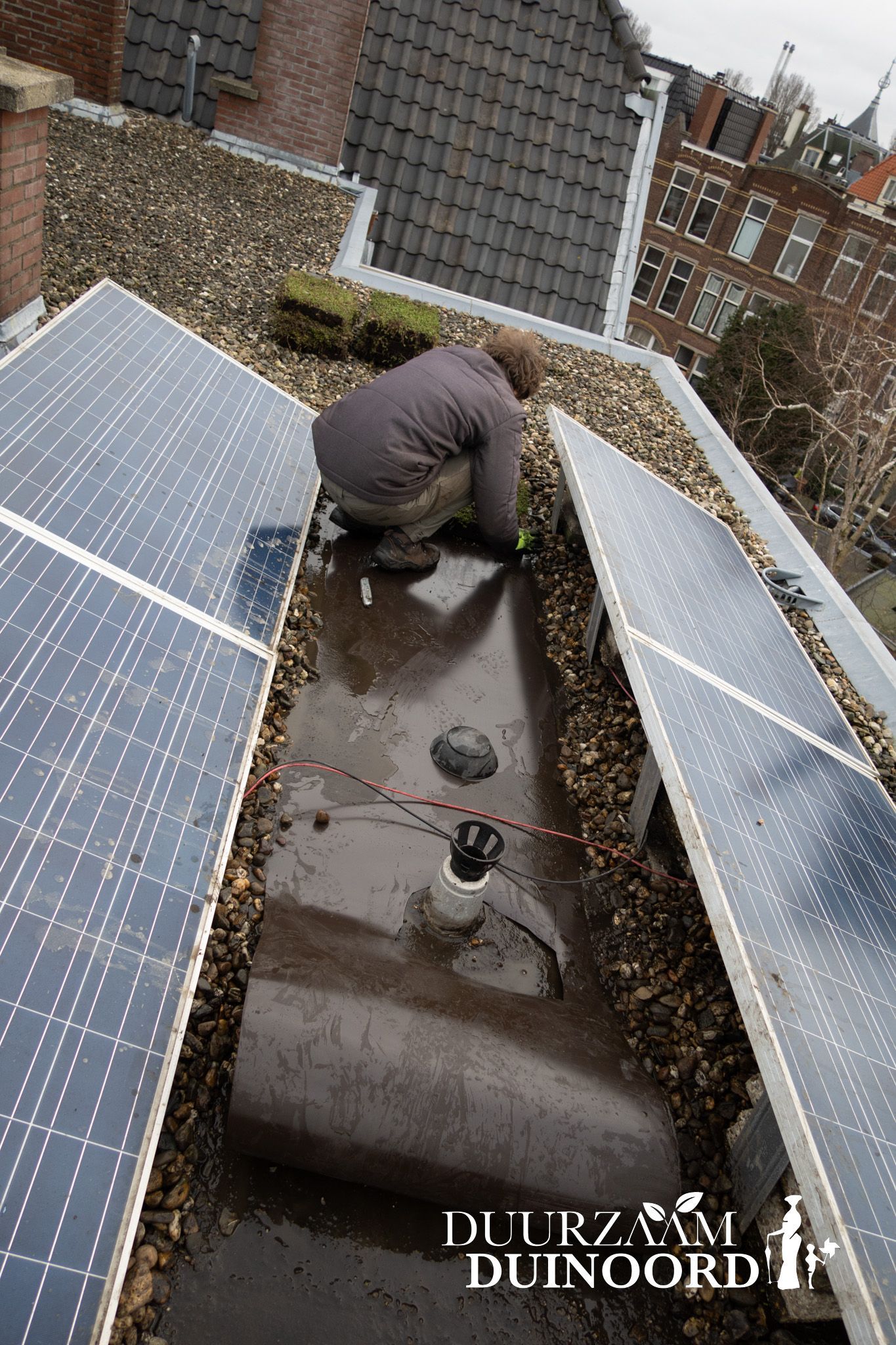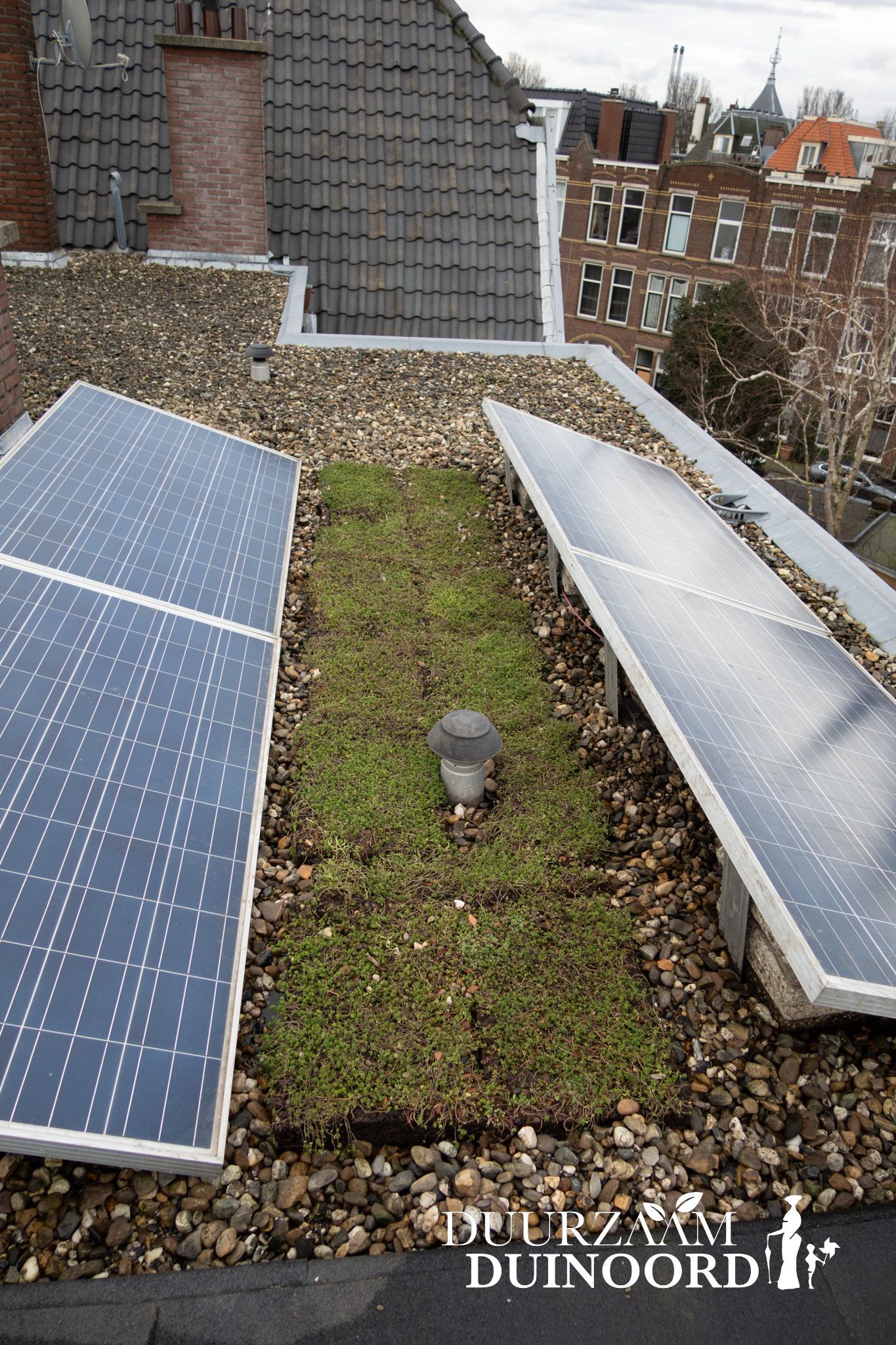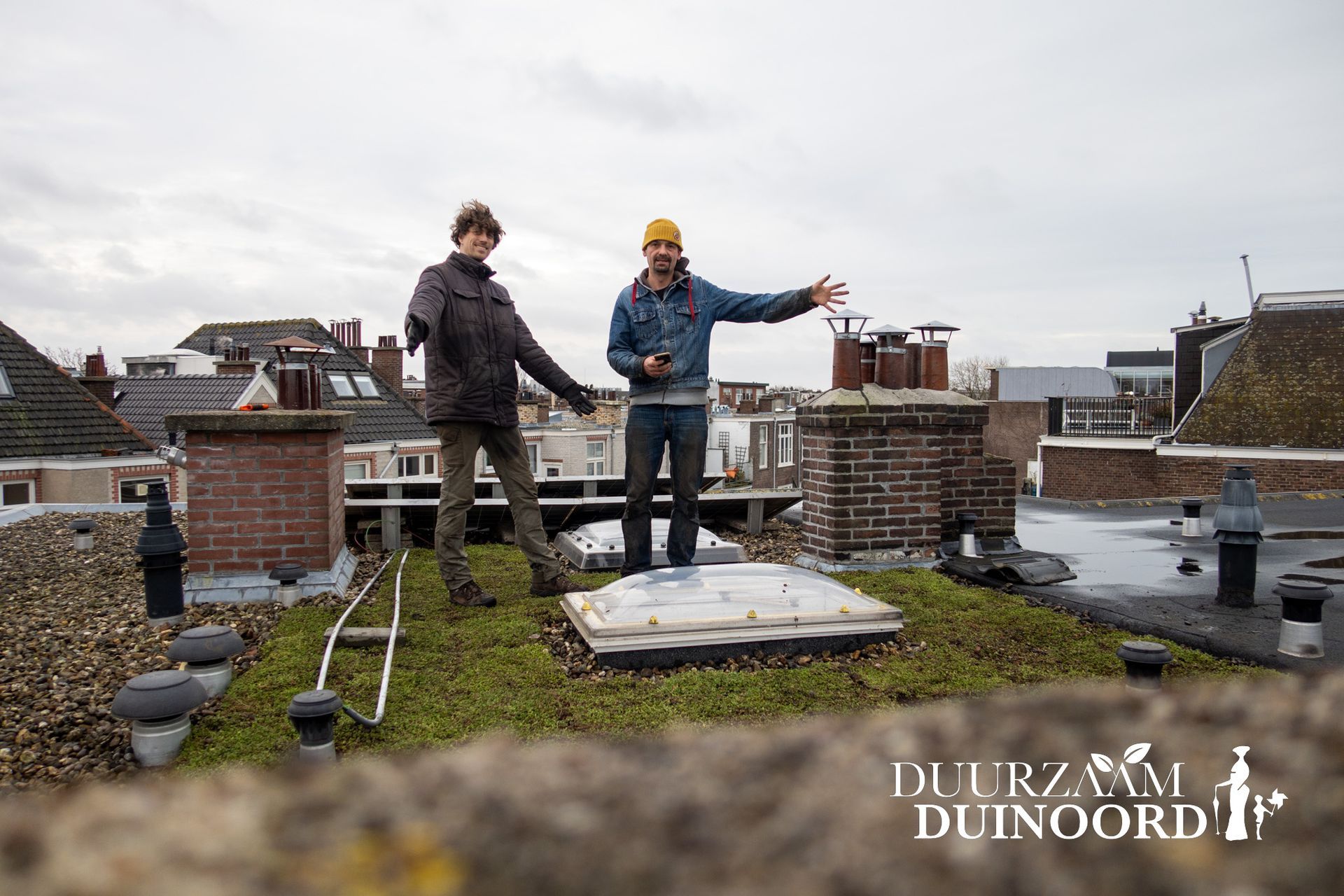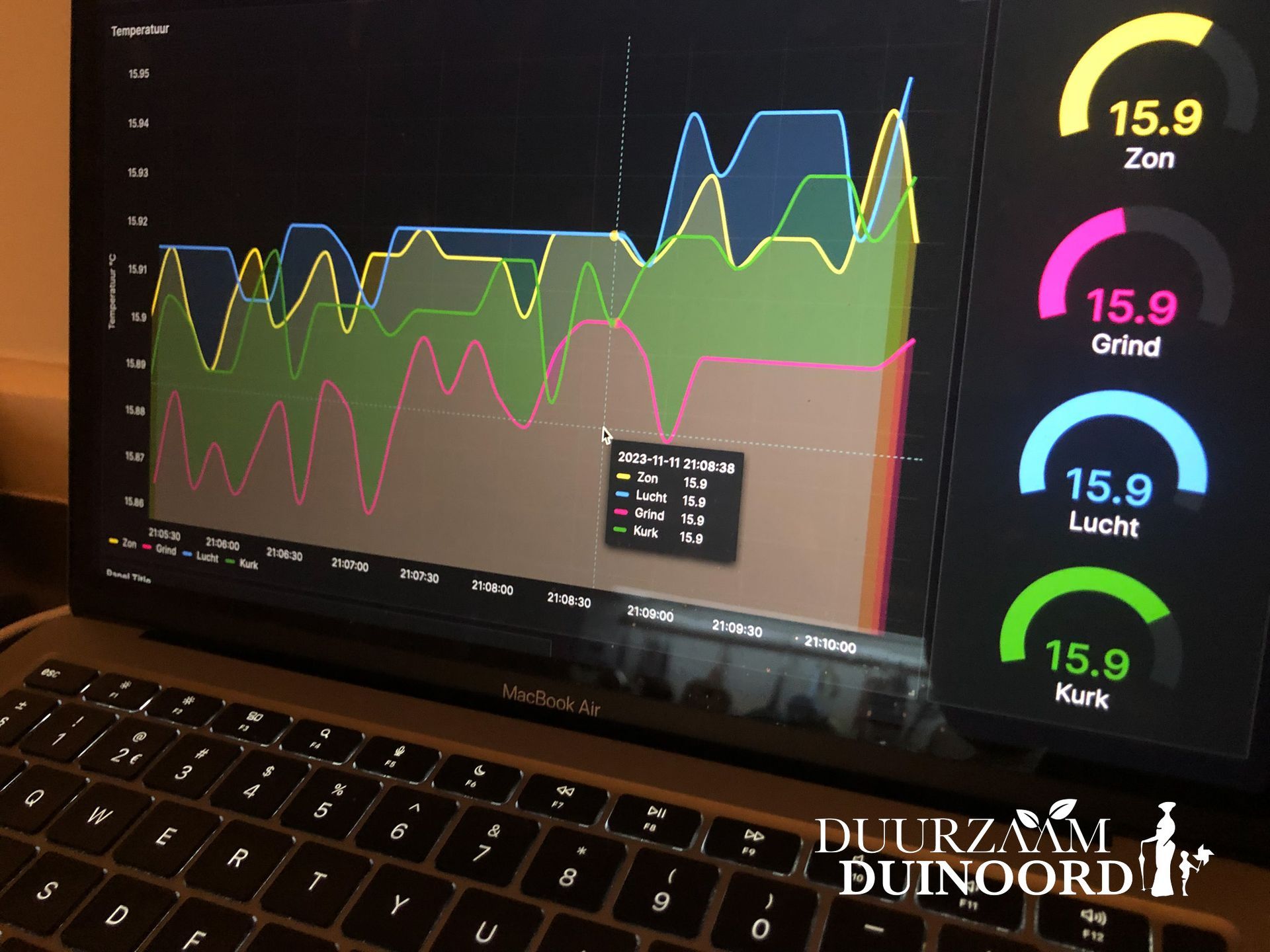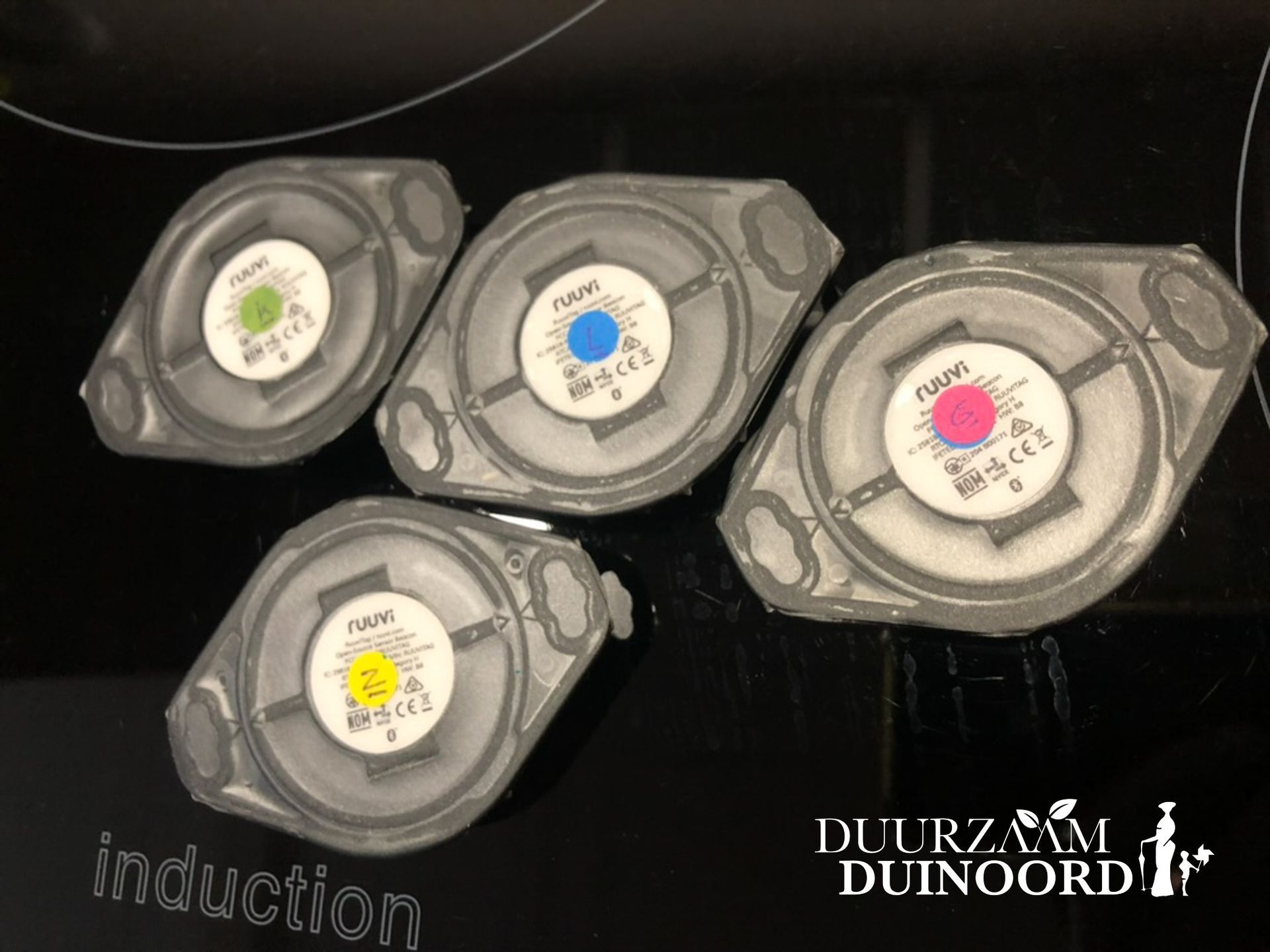Duinoord under the Cork
In this project we will investigate the effect of Sedum cork roof on insulation in winter and cooling in summer. In addition, we will organize a cork collection campaign with the youth to create awareness for this valuable raw material. This project is made possible by the efforts of the volunteers of Duurzaam Duinoord with the support of the municipality of The Hague (Energie uit de Wijk Challenge).
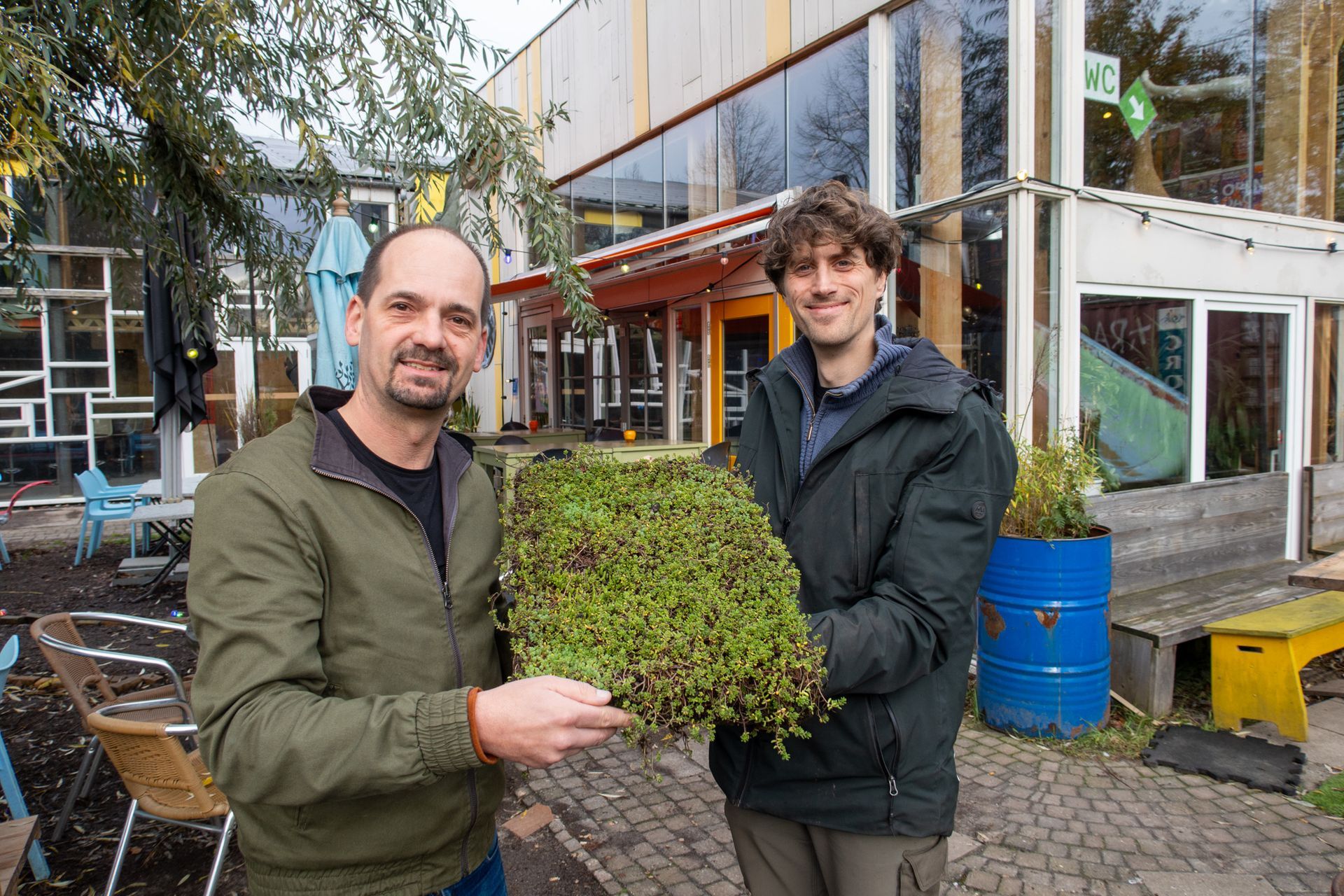
!!!! On Saturday May 10, 2025 the final presentation of the 'Duinoord under the Kurk' project will take place. See announcement at updates below !!!!
In Duinoord there are many flat, uninsulated roofs. In the winter, an average of 30% of the heat is lost through the roof, which you see on the energy bill. One solution is roof insulation, but this is a major investment that the VvE often postpones, especially if the bitumen is still good. We also often see that the landlord does not cooperate.
In the summer, 40% of the heat enters through the roof. More and more people are considering air conditioning, which costs a lot of energy. One solution is a sedum roof, which allows you to lower the temperature of the space underneath by 5 degrees. Unfortunately, sedum does not insulate or hardly insulates. A possible solution is the combination of cork (insulation) and sedum (cooling).
From pilot
The company Earthkweek supplies sedum-cork cassettes. The cassettes have a size of 50x33 cm and are easy to lay and move. Cork is a well-known insulation material that has been used for a long time. There has also been a lot of research into the cooling effect of sedum. The combination that we want to use with sedum and cork is much less known. That is why we want to measure the effect of this application on the temperature of the roof surface and compare it with three variants:
- Standard gravel roof
- Shadow of solar panel
- Sedum/cucumber
The three roof surfaces on our test roof have the same amount of sunlight and the space underneath has the same temperature. By measuring the temperature at these points for a year, we can determine whether/which there is a difference in temperature. The expectation is that the sedum/cork roof will heat up less quickly in the summer and insulate in the winter. We are going to find out how well this works!
Cork Hunt
Duinoord is rich in cork. These are hidden in the kitchen drawers of our residents. Unfortunately, this cork can only be delivered in a few places, may not be disposed of with the GFT and often ends up in the residual waste. And that is a shame because cork can be recycled very well. That is why we asked for the help of our cork hunters who collected 15,000 corks in June (see update below) from which beautiful new things are made again. Do you want to continue collecting cork? Take a www.spullenbak.nl or deliver them to Odin on the Aert van der Goesstraat in The Hague or one of the other collection points in the Netherlands, see the map on the cork recycling company De Eker here.
Continued in 2024?
If the pilot is successful, we want to organize a collective purchasing campaign in 2025.
Partners
Municipality of The Hague, EarthKweek De Eker and ProSuber.
Update-jes
April 2025 - Save the date: on May 10, 2025, the final presentation of the Duinoord under the Kurk project will take place. During this meeting, we will show how we approached the project and discuss the most important findings and there will be room for questions. The meeting is part of the Tegelwipactie and mini green market program.
Date: Saturday, May 10, 2025
Time: 12- 13 hours
Where: In the Duinoord Library, Sweelinckplein 42
Registration: to follow
January 2025 - Time flies! But there is much more flying on the Cork-Sedum roof. From July 2024 I have therefore hung up a camera with which I can monitor the air traffic. And almost every day there are guests to be found. From all kinds of birds to a curious bee. You can also see that the sedum is constantly changing and adapting to the season. Click on the video next to it to see a compilation from July 2024 to January 2025.
September 2024 - Summer is turning into fall, a good time to take stock. I was visited by Johannes Frölich, he is a House Doctor and makes informative videos on various topics related to making your home more sustainable. I showed him my roof and told him about my experiences as far as they are available now and what my role as climate mayor of The Hague entails. This provided a very nice overview of the pilot and gives you an insight into what the roof looks like. Also take a look at Johanne's other videos and be inspired for even more sustainable ideas!
August 2024 - On a rail trip in Portugal and 'coincidentally' passed the area where the cork for the cassettes comes from. There I was given a tour and visited a plantation and the cork factory. The cork oak protects the land against drought, can withstand a forest fire and stores CO2 in the bark. The bark (cork) is harvested for the first time after 25 years. Then once every 7 years. The first harvest produces a raw cork that is less suitable for wine corks, for example, but which can be processed excellently into insulation material. By 'baking' the cork, the cork expands like a kind of popcorn. The released resins bind the whole thing together without any additives. A material with a future.... A Portuguese proverb teaches us: he who cares for his grandchildren, plants a cork oak. I would say: he who cares for his grandchildren, insulates with cork.
July 2024 - It is now summer and after a very wet spring, the temperature is starting to rise and a drier period is starting. One of the advantages of a sedum roof is that it can bloom exuberantly. Within a short time, the green roof turns into a flower garden. The neighbors have also found this oasis. Unfortunately, I do not have a view of my roof all day long, but my neighbors let me know that they enjoy the constantly changing view every day. Nice to hear!
June 2024 - The cork collection campaign organized by Duurzaam Duinoord was a great success. The cork hunters collected approximately 15,000 corks. The campaign was part of the "Duinoord under the cork" project to involve the neighborhood and make it aware of cork as a valuable raw material. The collection day took place on June 1, 2024 during the Go Green Market and was promoted via flyers to 5,000 addresses, the Duurzaam Duinoord newsletter and Hoplr. Volunteers received the corks, weighed them and handed out raffle tickets for every 100 grams. Prizes such as a refurbished PS5 (purchased with a 12-month warranty via GooHoo) and various activities were raffled. The corks are processed by our partner De Eker. Corks can still be handed in at Odin at Aert van der Goesstraat 35 or via www.spullenbak.nl, which is delivered to and collected from people's homes free of charge.
May 2024 - The sun is higher, the days are getting longer. We see that the temperature of the roof surface gravel shoots up considerably, with sun and sedum cork remaining a few degrees lower, with sun peaking earlier than sedum cork.
April 2024 - Although the spring has been quite wet so far, the days are getting longer and we can see that in the measurements. Especially when the sun breaks through for a longer period of time, sedum is increasingly cooler than gravel. We are also increasingly seeing a greater temperature difference, with the gravel warming up faster than the roof surface with sedum. The differences are now limited to 1 degree, we expect that this difference will increase as the sun shines longer. What is also noticeable is that the roof surface with solar panels is much warmer than gravel. The hypothesis that this roof surface would remain cooler due to the shade of the panels therefore seems incorrect.
March 2024 - It's spring again! We look back on a short period of frost, a lot of rain and longer days. We have different observations. For example, we see that in wet weather, the difference between the roof surfaces is small. But when it gets really cold, this often precedes a dry period. Due to the drying of the sedum cork, it seems that the insulation value increases. When the temperature rises, we see the opposite, but to a much lesser extent. The interim conclusion is that sedum cork always insulates (somewhat) compared to a roof with gravel. But when it gets really cold, sedum cork insulates substantially. The disadvantage of storing cold during warming seems limited.
January 2024 - The measuring has started! We have programmed a dashboard in which the data from the sensors is displayed in one image. You can see the temperature on the y-axis and the time on the x-axis. We can adjust the period so that we can compare different days. The images below show a number of examples of what we have seen. In the coming period, we will look at the effect of temperature on the three roof compartments over time.
December 2023 - The sedum cork cassettes have been laid. We used a roof lift and started by removing the gravel layer. There was 5 cm of gravel, which is 75 kg per m2. Instead, the sedum cork cassettes were placed, with a maximum weight of 51 kg. After laying the root-resistant layer, the sedum cork cassettes could be placed. These have a size of 50x33 cm. For good water drainage, an edge of approximately 10 cm has been left between the roof domes and chimneys, which is filled with gravel. The sensors have been placed and the pilot has started. Apart from the technical facts, the roof immediately looks more attractive with sedum cork!
November 2023 - We have set up a dashboard in which the measurement data is visualized. For the techies among us, here is an explanation of how we did this: In order to record the measurement data, a mini-computer (Raspberry Pi) was used that receives the measurements from the 4 RuuvTag sensors via Bluetooth. To ensure good reception, the mini-computer is placed as close to the ceiling as possible and connected to the network via a Devolo LAN connector that is connected to an unused light point. In terms of software, we use a data collector (RuuviCollector 3.8k) with a database (InfluxDB 686), where the data is visualized in a Grafana dashboard (427)
Presentation Duinoord under the stool and Jelle at Den Haag FM, fragment November 2, 2023



